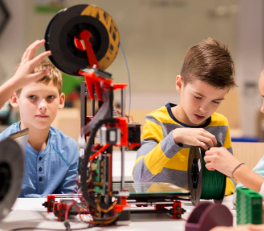Active learning transforms students from passive listeners into engaged participants. Instead of simply taking notes, learners become involved through problem-solving, discussion, collaboration, and hands-on activities. Here are practical strategies educators can use to encourage active learning in any classroom setting.
1. Use Think-Pair-Share
This simple method involves asking students to think about a question individually, then pair up to discuss their ideas before sharing with the larger group. It promotes reflection, speaking confidence, and peer-to-peer learning.
2. Incorporate Group Work
Working in small teams allows students to tackle challenges together, combine ideas, and support one another’s understanding. Group activities can be used for brainstorming, case studies, or even peer-teaching sessions.
3. Integrate Technology Tools
Interactive platforms such as Kahoot, Padlet, or Google Jamboard bring an element of fun while allowing real-time collaboration. These tools are especially effective in both in-person and virtual classrooms.
4. Encourage Hands-On Projects
Let students apply what they’ve learned through creative projects, models, or experiments. This reinforces learning through doing and makes concepts more memorable.
5. Ask Open-Ended Questions
Questions that don’t have just one correct answer encourage deeper thinking. They also create space for students to express diverse ideas, promoting discussion and critical analysis.
6. Use Role-Playing and Simulations
Allowing students to take on roles related to lesson content helps them explore topics from different perspectives. It also builds empathy, teamwork, and problem-solving skills.
7. Offer Choice and Voice
Letting students choose how they want to demonstrate understanding—through art, writing, presentations, or videos—can boost motivation and ownership of learning.
8. Apply Real-Life Scenarios
Relating lessons to real-world situations helps students understand the relevance of what they’re learning. Case studies and problem-based tasks make knowledge more applicable and engaging.
9. Break Up Lectures with Interaction
Even in traditional lecture settings, pausing for a quick question, poll, or short activity keeps energy levels up and attention focused.
10. Create a Safe Learning Environment
Students are more likely to participate when they feel respected and supported. Encouraging a growth mindset and celebrating effort can build the confidence needed for active involvement.
Final Thought
Active learning doesn’t require a complete classroom overhaul. By integrating small changes and valuing student participation, teachers can create an environment where learning becomes a shared, dynamic experience.














